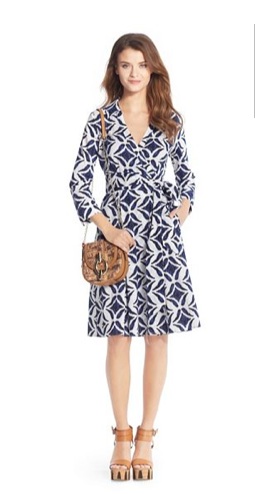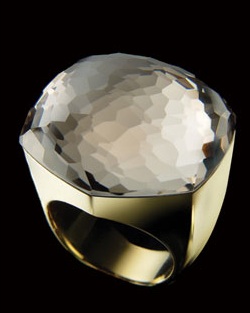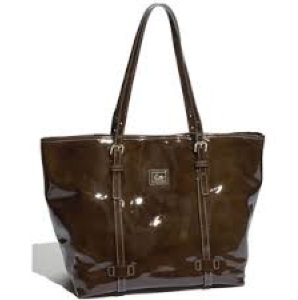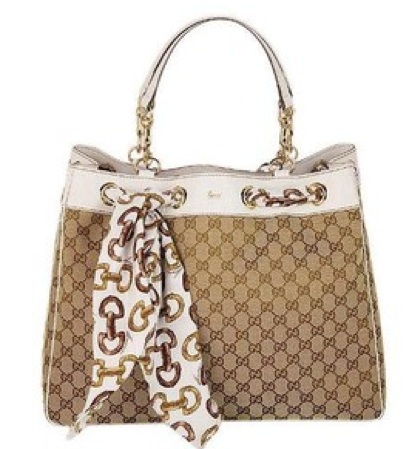Articles and News
Are Luxury Brands Worth The Price Premium? | March 26, 2014 (0 comments)

Merrick, NY—Bobby Wizig, owner of Robert's Fine Jewelry in Houston, TX, tells the story of a conversation he once had with a representative from Pennzoil about the company’s various automotive fuel additives.
“What’s the difference between the regular and the premium?” asked Wizig. “Eighty nine cents,” replied the rep.
Did the rep misinterpret Wizig’s question as a simple price inquiry, or was it an admission that there was no real difference between the two products, only price and marketing? If so, what do consumers expect when the difference between two products is thousands of dollars, not less than one dollar? And what does it mean for luxury retailers when high-priced products don't live up to their brand promise?
One of my press counterparts recently blogged about her disappointment with a designer handbag. I’ve had similar experiences. The pantsuit that cost half a paycheck but looked like I’d slept in it after a two-hour flight. The ethereally beautiful crocheted sweater that snagged every time I moved. Costly luxury “It bags” whose handles broke off with what I consider routine use.
Surely we're not alone in our disappointment, so will experiences like this risk turning customers off luxury altogether?
Wizig doesn’t believe it does. Just because a customer has an issue with one brand doesn’t mean they don’t trust another, he says, but he also acknowledges that brands can charge for the name without delivering any significant added value in the product.
“Everyone has a budget in mind. If a customer sees a [branded] ring that has 30 points of diamonds for $6,000, but they don’t want to spend that much money, you can find them an unbranded one that’s very similar for $3,500,” he says. Other customers want the name, period, even if it is more money without more ring.
Marie-Helene Morrow, owner of Reinhold Jewelers in San Juan, PR, believes a bad experience can leave lingering doubts. "Our clients expect quality and perfections when they buy from us. This relates not only to the product but to the service. They expect the best and are disappointed when their expectations are not met. I believe poor service or workmanship affects how they feel about luxury jewelry long term."
Andrea Hansen, president of LuxeIntelligence, a consulting firm in New York, says the equity of a brand is intertwined with service, and the key is how quality issues and performance problems are handled and resolved by the brand and the retailer. But she cautions that the fashion industry’s approach to luxury is radically different from fine jewelry. Luxury fashion—especially accessories—is intended to be short lived and seasonal, even though it’s expensive. Jewelry, on the other hand, is expected to last.
“It’s very hard to do an apples to oranges comparison of fashion to jewelry. We’re bound by intrinsic value and we always try to justify the price. Accessories brands don’t even think about justifying the price. They impart luxury to themselves by making it high priced, and they still consider it seasonal, disposable,” she says.
Dana Thomas, author of Deluxe: How Luxury Lost Its Luster, concurs that the big luxury conglomerates view their fashion products as seasonal and disposable, but she says consumers really do buy the marketing propaganda that the product is special.
"That’s why I wrote Deluxe, to show that this is big business, just like any other, and that those [fashion] products are churned out by the millions on assembly lines," Thomas told The Centurion. "So many of the brands are run by the same managers—they move around companies now very easily and frequently—and follow the same business model, which puts quantity over quality and sacrifices product integrity for profits." Still, she says, a customer who's had a bad experience with a brand usually only dismisses that brand, not luxury as a whole.
Fine jewelry is different. As the former marketing director for Brazilian luxury jeweler H. Stern, Hansen was intimately involved in the collaboration between the jeweler and renowned fashion designer Diane von Furstenberg.
“Our biggest concern was that Diane is a fashion icon but we’re not a one-season product.” Nobody would spend $18,000 on a piece of fine jewelry if they thought it was seasonal, says Hansen. By contrast, von Furstenberg’s famous wrap dresses retail between about $200 and $600.


Fashion designer Diane von Furstenberg rose to iconic status with her jersey wrap dresses, left, but her jewelry collaboration with H. Stern (right, an 18k gold and rock crystal ring) is a classic, not seasonal, purchase. Ring price on request.
Sometimes a well-made premium brand serves a consumer's need better than renowned luxury labels. Last year I bought a Dooney & Bourke brand tote. Dooney is a premium brand with a reputation for sturdy construction. My tote has been rained on, stuffed to the gills, shoved under airplane seats, and so on. It looks as good as new. I also have a Gucci tote that cost five times as much, but it’s already had to have both its handles fixed, and I question whether it will ever hold a laptop without breaking. For what Gucci’s storied heritage and luxury brand promise represents, I did expect it to hold a computer.
Was I expecting too much? Perhaps. But where is the line between a reasonable expectation of performance, and a product that’s just not delivering?


Holds computer, shoes, and a lot more. My Macbook fits easily, but the handles broke.
Hansen goes back to her earlier point about disposability and seasonality. Luxury fashion is about design, not durability. “Even if you’re spending $1,500 on a pair of Louboutins, it’s still a shoe! They’re going to hit the pavement and they’re going to wear out.”
I guess the fact that I expected my Gucci tote to hold a computer doesn’t mean that Gucci designed it for that purpose. I still have the tote, but now I know to use it on vacation, not business trips, meaning I won’t get as much use of it as I’d planned. And when I do need a new work tote, don’t buy Gucci for that purpose, no matter how much style it has.
Author Thomas takes luxury fashion brands to task for overselling expectations. "When the seam splits or the hem rips out or the buttons fall off or the color has washed out or faded within the first few times of wearing, I think it is fair to say you have been ripped off. And all of those things happen regularly with 'luxury' brand products. It should be embarrassing for the brands, but they seem unfazed. Luxury keeps raising its retail prices—exponentially—while not changing anything about its product, and sometimes actually cutting quality. Once a consumer has found a viable replacement, why go back to knowingly overpaying?"
But when a customer invests as much as luxury jewelry and watches can cost, they especially want to get their money’s worth in pleasure of wearing it. As Hansen says, if you’re spending $20,000 on a Patek Philippe watch, you do expect it to last 40 years.
“No brand is 100% perfect 100% of the time, but you stand behind it and the brand usually takes care of it. If it happens again, then you have to reevaluate,” says Wizig. He’s never had to drop a branded line for quality issues, he says. He’s dropped brands for other reasons, but not because of quality.
But Marie-Helene Morrow has dropped brands because of quality issues. “If I feel the client is right and the designer is wrong, I won’t buy from the designer again. Who needs the headache?” she says.
“I feel for the designer and the client,” adds Morrow, but sometimes clients really don’t understand that fine jewelry is more fragile than they think. She cites a customer who, despite Morrow's instructions, routinely went golfing in the emerald band her husband gave her—with predictable results.
“I wish I could do a Truman Show on them!” laughs Wizig. “’I never wear it that hard or that often’ [say customers] but they’ve beat the s**t out of it.”
Wizig also tries to gently guide consumers before the purchase to avoid disappointment later. “If a woman wants an eternity band, I go through the different types of settings with her; shared prong, invisible, channel, etc. I ask her about her lifestyle. If she’s very active, I’ll suggest she not go for an invisible setting because it leaves the diamonds more exposed.” And when possible, he will ask the designer or manufacturer to customize a piece of jewelry that might get hard wear. Sometimes it works, sometimes it doesn’t.
“Designers are artists, and they can get offended if you ask them to do something differently. And big brands don’t always find it cost-effective to change out one piece,” he says. But brands that typically build each piece to order anyway are usually a good bet to work with the customer’s needs.
Ultimately, says Thomas, it's the retailer who has to draw the line. "If a retailer wants to sell only quality product, then that’s what the retailer should do. They know the merchandise."







